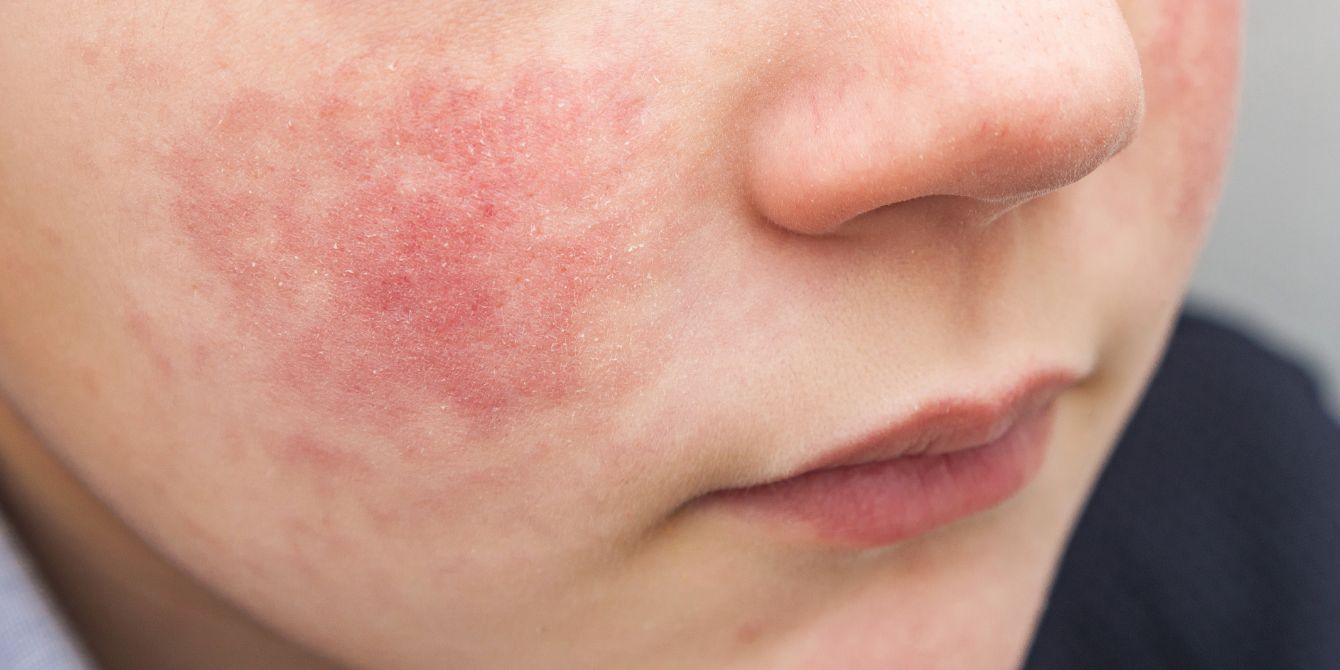Once you become a parent, you suddenly become intimately familiar with a wide array of childhood illnesses, from hand, foot and mouth disease to chicken pox to RSV. One of those common childhood illnesses you may not have heard of yet, known as Fifth disease, is currently on the rise in the US. The Centers for Disease Control and Prevention (CDC) recently reported an increase in cases, particularly among children ages 5 to 9. While most cases in kids are mild, the virus, which is caused by parvovirus B19, can be dangerous for pregnant people or those who are immunocompromised. Here’s what parents should know about the virus and what next steps to take.
What is Fifth disease?
Fifth disease, also known as “slapped cheek” syndrome, is a common childhood illness caused by parvovirus B19. It’s called “fifth” disease because it was the fifth on a list of common childhood rashes (the numbered list is no longer used as a classification system, but previously included measles, rubella, scarlet fever and roseola, among others). The virus typically causes a bright red rash on the cheeks, hence the “slapped cheek” moniker.
In spring of this year, public health authorities in 14 countries across Europe saw unusually high numbers of cases of parvovirus B19. Because there is no routine surveillance for parvovirus B19 in the US, it’s difficult to spot rising cases, but the CDC has received recent reports of test results indicating increased activity stateside.
According to the CDC statement, the proportion of people with IgM antibodies, an indicator of recent infection, rose among all ages from less than 3% during 2022 to 2024 to 10% in June 2024. The greatest increase was observed among children aged 5 to 9 years, from 15% during 2022 to 2024 to 40% in June 2024, though kids of any age can contract the virus.
Fifth disease is highly contagious, with 50% of people who don’t already have antibodies for the virus infected after a household exposure. The virus spreads through respiratory droplets, and most commonly affects children—but it doesn’t always show symptoms. The good news is that most adults have immunity from childhood exposure. About 50% of adults have detectable antibodies by age 20, and more than 70% of adults have detectable antibodies by age 40, the CDC notes.
Symptoms of Fifth disease
According to the CDC, the virus may sometimes come with no symptoms, or very mild ones when they do occur. Here are the possible symptoms (and the timeline) to look out for.
- First phase (about 7 days after infection, lasting 5 days):
- Fever
- Fatigue
- Muscle aches
- Second phase (7 to 10 days after first phase):
- Bright red rash on cheeks (“slapped cheek” appearance)
- Lacy rash on body and limbs
- Joint pain (more common in adults)
The virus is the most contagious during the first phase, before the rash appears. Children are no longer considered contagious once the facial rash appears, about a week after the first phase.
Treatment for Fifth disease
Because it’s a virus, taking antibiotics won’t help. The most effective way to treat the illness is with rest and supportive care—most cases resolve on their own. Severe complications are rare in healthy children, the CDC reports. If your child has a weakened immune system or a blood disorder like sickle cell disease, be sure to seek medical care, or if you’re pregnant (more on that below).
How to prevent infection
While Fifth disease is usually mild in healthy children, the recent increase in cases highlights the importance of awareness and prevention.
As with any virus, practicing good hand-washing hygiene is important to prevent illness, and avoid sharing food or drinks in your household—and especially if you’re pregnant. You may want to filter your indoor air by using household air filters, or you could consider using a mask in crowded settings.
What to know about Fifth disease in pregnancy
Parvovirus B19 can be more serious for certain groups of people, including pregnant people who have not been previously infected (meaning they don’t have previous antibodies). Remember that most adults have already had a parvovirus B19 infection in childhood and thus have immune protection. If you have antibodies from previous infection, you and your baby are usually protected from the virus, the CDC states. It’s good to note also that not everyone who is exposed to the virus will become infected.
In most cases, if you contract the virus while pregnant and you and your developing fetus will be fine, but there’s a 5% to 10% chance of your baby developing anemia (low red blood cell count), a condition called hydrops (fluid buildup in the baby’s body) or it may lead to miscarriage or fetal loss in some cases. These outcomes are rare, and the risk is highest between weeks 9 and 20 of pregnancy.
The most important step to take is to see your doctor quickly if you notice a fever and body aches. Fevers in general can be dangerous in pregnancy, but developing parvovirus B19 could mean a need for increased monitoring of the developing fetus to watch for anemia. Try to take extra steps to avoid infection in pregnancy when and where you can, and be sure to reach out to your birth provider with any questions.

